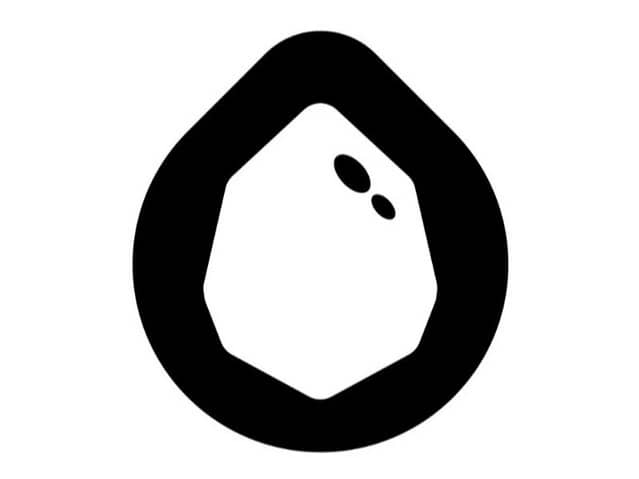订阅 wiki
Share wiki
Bookmark
Drop
Drop
Drop 是一种用于 Interchain 资产的流动质押协议,使用户能够在保持其质押资产流动性的同时赚取质押奖励。作为 Lido 联盟的成员,Drop 将质押资本转化为流动代币(dAssets),这些代币可以在各种 DeFi 应用程序中使用,同时继续产生质押奖励。 [1]

概述
开发 Drop 是为了解决权益证明网络中资本效率低下的问题,在权益证明网络中,质押资产通常在质押期间变得缺乏流动性。该协议在 Neutron 上运行,利用 Inter-Blockchain Communication (IBC) 协议在 Cosmos 生态系统中跨多个 区块链 网络提供流动质押服务。
作为 Lido 联盟的一部分,Drop 支持去中心化关键 Ethereum 生态系统组件(如桥梁和数据可用性层)的举措。它还有助于创新和实验,从而使 Lido 和更广泛的 Ethereum 网络受益。此外,Drop 还在互连的 区块链 中推广 wrapped staked ETH (wstETH) 的分发和采用,包括将其用作 Interchain 生态系统中的重新质押抵押品。Drop 旨在通过将停滞的、冻结的资本转化为生产性资产来加强主权 区块链 经济的经济可行性。该协议的架构利用 Neutron 的 Interchain Transactions (ICTX) 和 Interchain Queries (ICQ) 模块,使其能够提供信任最小化的流动质押服务,这些服务可以扩展,而无需额外的开销和风险。
Drop 的核心创新在于它能够使用 Token Factory 标准铸造流动质押收据代币 (dAssets),从而使用户能够在赚取质押奖励的同时保持流动性,并通过各种 DeFi 应用程序获得潜在的额外收益。 [1] [12]
架构
Drop 的技术架构构建在 Neutron 上,作为一个集成应用程序,利用了几个关键组件:
- CosmWasm 智能合约: 核心协议逻辑实现为 CosmWasm 合约,这些合约控制多个 区块链 之间的资产流动
- Inter-Blockchain Communication (IBC): 支持 Neutron 和其他基于 Cosmos 的链之间的安全跨链通信和资产转移
- Interchain Transactions (ICTX): 允许 Drop 从 Neutron 启动远程链上的交易,这对于质押和取消质押操作至关重要
- Interchain Queries (ICQ): 允许 Drop 查询远程链中的数据,从而提供有关验证器性能和网络状况的实时信息
- Token Factory: 用于根据 Neutron 上的 Token Factory 标准铸造和管理 dAssets [4]
产品

Drop 提供几种流动质押代币 (dAssets),这些代币代表不同网络上的质押头寸:
- dATOM:Cosmos Hub 的 ATOM 的流动质押代币
- dTIA:Celestia 的 TIA 的流动质押代币
- dNTRN:Neutron 的 NTRN 的流动质押代币
- deINIT:INIT Labs 的 INIT 的流动质押代币 [2]
dNTRN
dNTRN 是 Drop 为 Neutron 网络开发的流动质押代币,与网络通过 Mercury 升级过渡到主权权益证明 (PoS) 链同时推出。此过渡支持原生质押、流动质押和扩展的 DeFi 功能。
dNTRN 允许 NTRN(Neutron 的原生代币)的持有者参与质押,而无需锁定其资产。用户收到 dNTRN 以换取质押的 NTRN,在保持流动性的同时继续赚取质押奖励。该资产可以在 DeFi 应用程序(如借贷、流动性提供和交易)中使用,同时仍有助于网络安全。
dNTRN 的初始部署由 Neutron DAO 通过一项战略流动性计划提供支持,包括 2.25 亿个 NTRN 质押给 Drop,2500 万个与 Astroport 上的 dNTRN 配对,以及 500 万个分配给 Mars Protocol 以支持借贷市场。这些措施旨在确保流动性、减少滑点并促进集成到更广泛的 DeFi 生态系统中。 [10]
deINIT
deINIT 是 Drop 在 Initia 的 L1 去中心化交易所 (DEX) 上开发的流动质押衍生品,旨在提高去中心化金融 (DeFi) 中的资本效率。它通过将 INIT-USDC 池(80% INIT,20% USDC)中质押的 LP 头寸代币化,将质押奖励和交易费用整合到单个生息资产中。
传统的流动质押解决方案通常将质押与流动性提供分开,从而导致部分生产性资本和激励措施错位。相比之下,deINIT 集成了这两项功能,使 100% 的 LP 头寸能够在参与 DEX 流动性的同时赚取质押奖励。
用户可以通过存入 INIT(其中 20% 转换为 USDC 以形成平衡的 LP 头寸)或通过质押预先存在的 INIT-USDC LP 代币来铸造 deINIT。这种方法会自动复合交易激励和质押收益,从而减少了手动干预的需要。 [9]
特点
Drop 的协议提供几个关键功能,使其在流动质押市场中脱颖而出:
- 自动复合奖励:质押奖励会自动再投资,从而在无需手动干预的情况下最大化回报 [3]
- 即时流动性:用户可以随时转移、出售或使用其 dAssets,这与传统的 质押(会将资产锁定一段时间)不同 [3]
- 可组合性:dAssets 可以部署在各种 DeFi 应用程序中,以获得额外的收益机会 [4]
- 空投资格:用户在通过 Drop 进行质押时,仍然有资格获得生态系统空投 [3]
- 验证器多元化:资产分布在多个验证器中,与使用单个 验证器进行质押相比,降低了风险 [5]
- 实时监控:该协议对所有关键组件采用 24/7 监控和警报,以确保安全 [4]
生态系统集成
作为 Lido 联盟的成员,Drop 受益于与 区块链 领域中最大的流动质押提供商之一的合作。该联盟已通过 Lido DAO 投票确认,将 Drop 定位为扩展 Interchain 生态系统的流动质押解决方案的战略合作伙伴。 [6]
Drop 已与 Interchain 中的众多 DeFi 协议建立了集成,包括:
- Astroport:无许可集中流动性 (PCL) 和 自动做市商 (AMM)
- Margined:金库策略
- Apollo:金库策略
- Shade:AMM、借贷和 稳定币服务
- Fission:收益拆分
- Levana:永续合约
- Osmosis:Uniswap V3 风格的 AMM
- Mars:借贷、保证金交易和永续合约 [4]
用例
- 无需锁定的情况下赚取质押奖励:用户可以质押资产并赚取奖励,同时保持随时退出头寸的能力 [3]
- 收益耕作:dAssets 可以作为流动性提供给 AMM 或收益耕作协议,以赚取额外奖励 [7]
- 抵押借贷:用户可以使用 dAssets 作为借贷协议中的抵押品来借入其他资产,同时仍然赚取质押奖励 [4]
- 交易和套利:dAssets 的流动性质允许在 dAsset 及其基础代币之间进行交易 [4]
- 参与治理:dAsset 持有者可能会参与 Drop 和基础网络的治理 [3]
Droplets 计划

Droplets 计划是一项计划,允许用户通过在各种 DeFi 应用程序中使用 dAssets 来赚取 DROP 代币(Drop 协议的原生代币)。用户因参与支持的活动而获得 Droplets 积分,这些积分可以在代币启动后兑换为 DROP 代币。 [8]
赚取 Droplets 的活动包括:
发现错误了吗?
